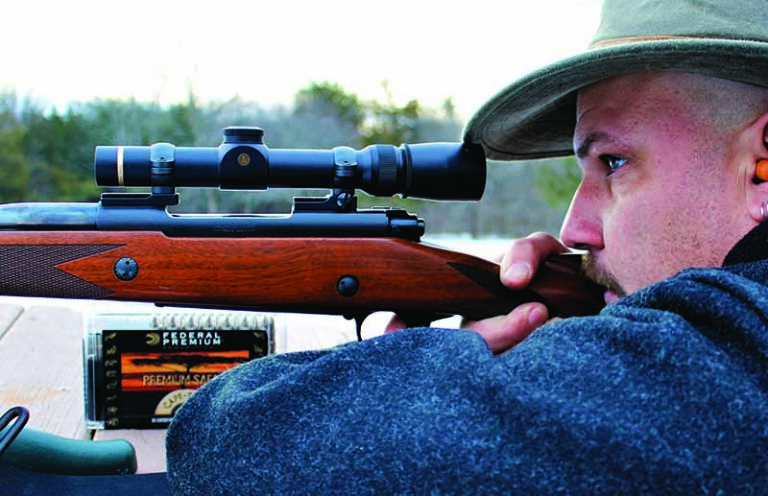
The history of the Leupold VX-3 family … including the birth of the 2021 models.
I was standing in the Catskill Mountains, on the edge of an old cutting where the hemlocks gave way to a grove of young beeches, with a gentle breeze blowing in my face. A light rain the night before had dampened the crunch of the leaves, but the sound of an approaching deer was unmistakable. Through the wall of hemlock branches, I could see the body of the deer, but only the lower half—just by the way it walked, I could tell it was a buck.
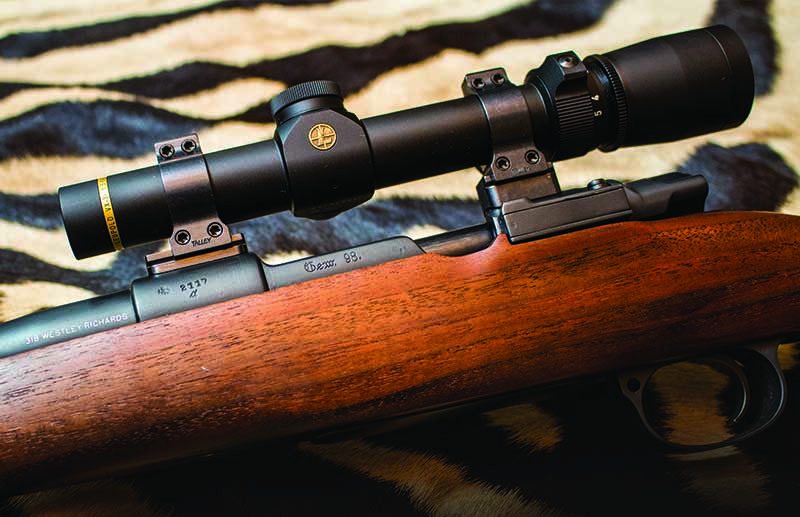
When I caught sight of his headgear, I knew it was on. He was a mature eight-point, with dark antlers—definitely a shooter for the Catskills. The Heym Model 26B over/under double rifle came easily to shoulder, and the crosshairs settled just behind the shoulder as he crossed the old logging road. One shot settled his affairs, as the 300-grain Federal HammerDown in .45-70 Government (chosen for the healthy bear population in the Catskills) made a quick kill, and I was all smiles.
Admiring the rifle after the shot, I began to think about the riflescope it wears: a Leupold VX-3i. This was the classic 1.5-5x20mm model, popular for use on the dangerous game rifles.
My personal history with Leupold spans about two decades—prior to that point I simply couldn’t afford them. There were other priorities, and because we had only a three-week deer season and one buck—and maybe a doe tag—I made do with my cheaper glass.
It was my first out-of-country hunt—a pursuit of Canadian moose with my dad—that showed me the limits of my riflescope, and set me in pursuit of a trustworthy yet rugged optic at a fair price. I had longed after those handsome riflescopes, with the gloss finish and gold ring on the objective end of the tube, so when I finally cracked open the piggy bank and screwed a Leupold to my rifle, I couldn’t have been happier.
Leupold Legacy
Leupold & Stevens’ history in the sporting optics world dates back to the 1940s, at a time when the reliability of riflescopes—which we all now take for granted—was questionable. I remember my father telling me the story of a riflescope that simply wouldn’t hold zero, to the point that he reverted back to iron sights for a couple of seasons. During the annual sight-in, I’d always check out the fancier rigs the older guys had and admired the Leupold scopes as much for their appearance as I did for how well they performed. By the time I was hunting—in the mid-to-late 1980s—Leupold’s reputation was set in stone, with the Vari-X I, II and III lines being firmly established.
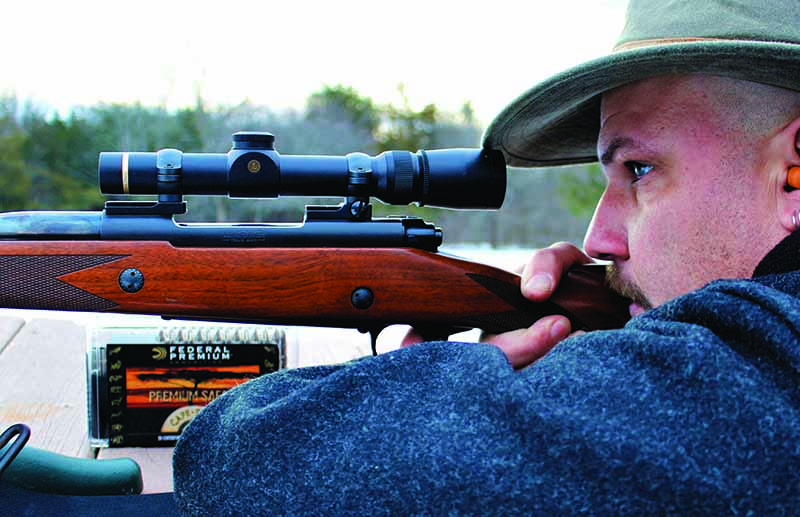
The Vari-X III line—the flagship of the fleet—was released to the market in late 1973, in three different models, each with a 1-inch maintube, in the gloss finish. This lineup included the now classic dangerous game 1.5-5x20mm, the very versatile 2.5-8x36mm (one of the best whitetail deer scopes ever made) and the long-range favorite, the 3.5-10x40mm, which later came with an adjustable objective.
The initial models claimed 92 percent light transmission and a 44-MOA adjustment range. For the time, this was certainly impressive. The adjustment knobs featured a coin slot and each ¼-MOA adjustment had an audible click. Six years later, Leupold would add what would become my favorite varmint/predator riflescope: the Vari-X III 6.5-20x40mm AO. The adjustable objective allowed for a crisp sight picture, even when the heat waves over the crusted snow created wicked mirage, and the fine duplex reticle—the duplex reticle we all know so well is another of Leupold’s innovations—allowed for precise shot placement.
The 1980s saw some revisions and differing options to the Vari-X III line, including the matte finish that hunters quickly embraced, as it was much better in the field in comparison to the gloss- blued finish, the traditional choice for Leupold scopes up to this point. There were detents in the power selector ring, and the ’80s saw the first range estimating models in the Vari-X III line.
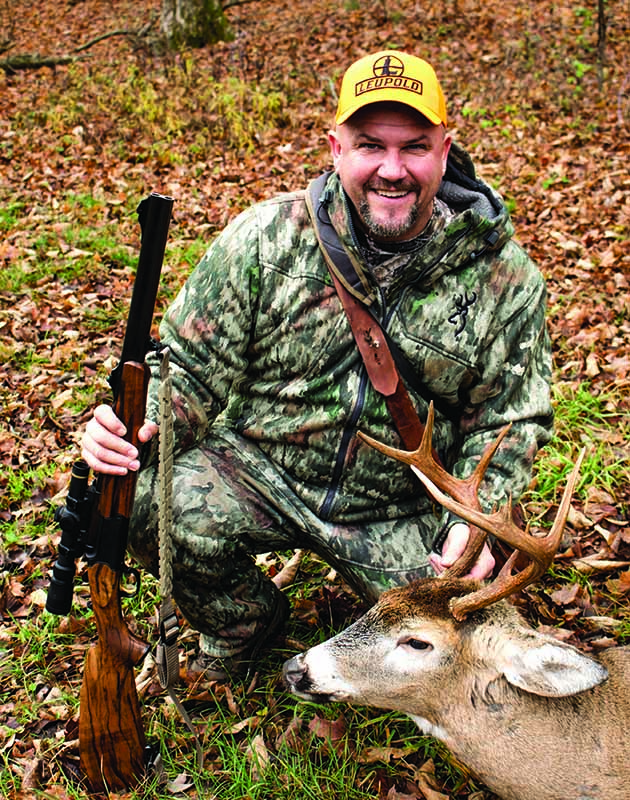
Scope Out More Optics Info:
- 8 Revolutionary Reticles For Long-Range Accuracy
- Buying the Perfect Precision Scope
- The Best Tactical Red-Dot Performance-to-Price Option?
- Shifting Winds: SIG BDX Changing Shooting For The Better
The 1990s saw a revamp of the lens coating on the entire line, with Leupold adding their proprietary Multicoat 4 treatment to the lenses, increasing both contrast and light transmission; the coating was standard on the Vari-X III line as well as the Mark 4s and a few of the M8 models. By the middle of the decade, the line was extended to include the new 1.75-6x32mm (possibly the scope for a .375 H&H), which gave a bit more mounting room for the magnum-length receivers, and the 4.5-14x40mm, bridging the gap between the 3.5-10x and the 6.5-20x models.
Their first large-objective-lens variable scope, the 3.5-10x50mm, was also introduced in 1990. With the increasing popularity of stainless steel finishes in the rifle and handgun world, Leupold released their silver-finish scopes in the 1990s to match the color scheme. In 1990, the construction of the scope tube itself changed, as Leupold engineers switched from a five-piece maintube to a one-piece maintube; it isn’t difficult to imagine how this enhanced rigidity and dependability.
Then, in 1997, the release of the 8.5-25x40mm AO gave the target shooter and varmint/predator crowd some serious magnification. A year later, the Vari-X III 3.5-10x40mm M3 Long Range scope—essentially the predecessor to the MK4 line—came onto the scene, with its 30mm maintube and adjustable objective. Some complained about the ½-MOA adjustments; others accepted the fact that the adjustment was designed for fast elevation changes.
By the turn of the century, Leupold would add the option of illuminated reticles to the Vari-X III line, even further increasing versatility of this product line.
Evolution Equals Versatility
In 2004, a radical change in the Leupold product line came, with a renaming of the entire lineup. The Vari-X was no more, being replaced with VX; the Vari-X I became VX-I, the Vari-X III became VX-III and so on.
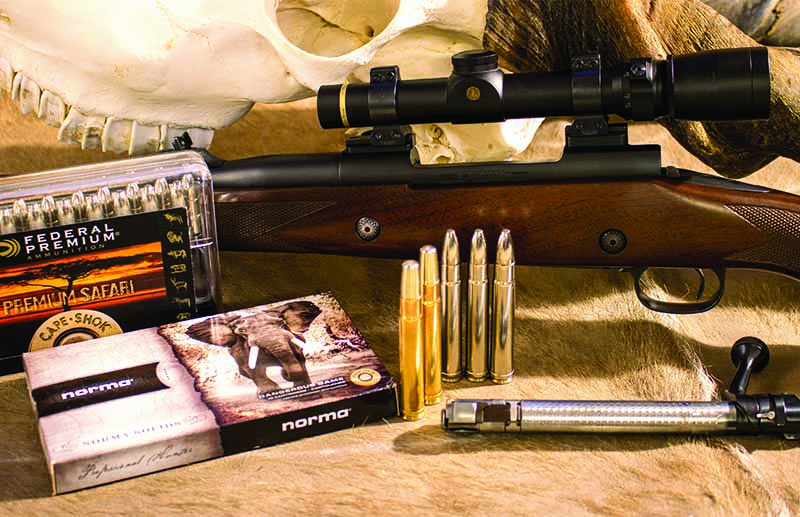
It wasn’t long after the transition into the VX era, when I bought a scope for my new buffalo rifle, a Winchester Model 70 Safari Express in .416 Remington Magnum, which was destined for a Cape buffalo safari to Tanzania. A Leupold VX-III 1.5-5x20mm, with the heavy duplex reticle, was in order to best find the black crosshairs against those big black bodies, in the dappled sunlight. That scope taught me quite a bit as well, especially how you can connect on 300-yard shots with just a 5x scope of good quality.
That highly versatile scope, with a low-end magnification capable of shooting a charging buffalo at distances measured in feet, as well as being able to reach out to 300 yards or more when needed, took my first Cape buffalo, threaded the needle on a good bushbuck ram in the thick riverine brush, took an old puku ram and ended the hunt on a warthog boar running as if he were shot from a cannon. That scope doesn’t lose zero, despite sitting in detachable mounts, is seemingly unaffected by recoil, and offers enough eye relief to be mounted on the hardest kicking rifle.
The VX-III line soon saw the change to tool-free, fingertip adjustments for elevation and windage, 30mm maintubes and illuminated reticles on certain models.

In 2009 came another revamp of the line, with the Roman numeral changing to an Arabic numeral; the VX-III became the VX-3. The Indexed Matched lens system came into effect, with an increase in lens coatings. Objective lens sizes increased, with the enormous 56mm lens being offered in the 3.5-10x and 4.5-14x models. The 30mm maintubes and the illuminated reticles were carried forward, as well as several models Leupold released in conjunction with the Quality Deer Management Association. This series of scopes also saw the introduction of the Leupold CDS, or Custom Dial System.
This system uses a replacement elevation turret, which is labeled in graduations for a specific load. The user would send the specifications and parameters of their chosen load—including bullet shape, make, model and BC, muzzle velocity and some environmental data—and Leupold would craft a dial marked in yardage increments for that particular load. Range the target, dial that for that distance, hold steady and send it. Wonderfully simple, and extremely effective, the CDS dial can be quickly changed for the standard MOA- or mil-labeled turret.
Then Came the ‘i’
The year 2016 saw a huge change in the history of the Vari-X III evolution: the release of the VX-3i. The “i” in the product line name stands for “improved,” and it was no misnomer. Leupold’s Twilight Max Management System, which takes full advantage of the DiamondCoat 2 lens coating, offers a completely different look. This new system uses roughly twice the amount of lens coatings as did the Index Matched method, over lead-free glass. This translates to a very important point for the hunter: When it comes to those low-light conditions at both dawn and dusk, when crepuscular game animals like the whitetail deer are moving most, the Leupold VX-3i will extend your shooting time.
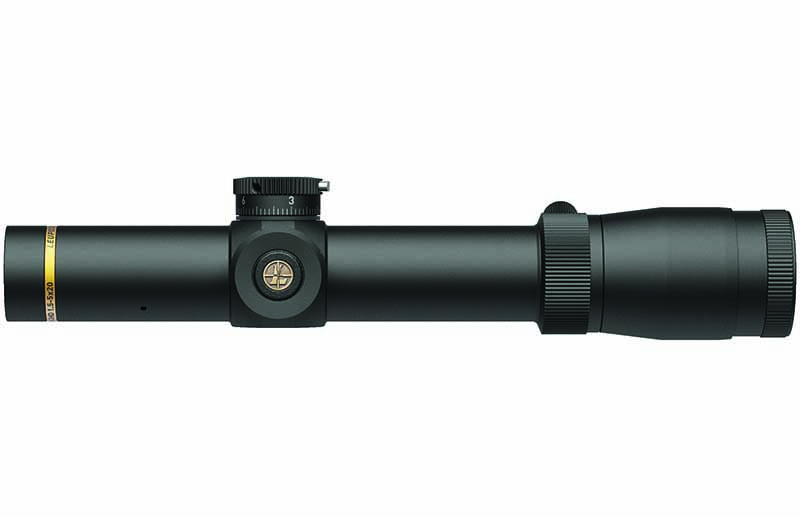
The VX-3i also introduced the CDS-ZL, the zero-lock feature that quickly shows the shooter the scope is set back to zero after dialing up—and is certainly becoming endeared by hunters and target shooters alike. Also, twin-bias springs in the erector system keep those crosshairs where you set them, no matter the recoil.
VX-3 In 2021
This brings us to the latest iteration of the scope line, the new-for-2021 VX-3HD series, featuring the Elite Optical system. This combination of maximized lens coating design, advanced computer-aided optical design and advancements in Leupold’s manufacturing processes have brought this compact, lightweight optical system to superior levels of performance.

All of the models now come with the CDS-ZL, with the MOA-labeled turret—and Leupold is offering a free custom dial of the purchaser’s choosing for their scope. Larger magnification models of the VX-3HD line will have the CDS-TZL2 turret, which offers two full revolutions on the dial.
Models in the VX-3HD line include 1.5-5x20mm (both 1-inch and 30mm tubes), 2.5-8x36mm (1-inch tube), 3.5-10x40mm (both 1-inch and 30mm tubes), 3.5-10x50mm (both 1-inch and 30mm tubes), 4.5-14x40mm (both 1-inch and 30mm tubes), 4.5-14x50mm (both 1-inch and 30mm tubes), 6.5-20x40mm (1-inch tube) and 6.5-20x50mm (30mm tube).

The Leupold Duplex reticle is offered on the 1-inch tube models, with the Illuminated FireDot Twilight Hunter reticle available on the 30mm tube models, with the 6.5-20x models each featuring the Fine Duplex reticle. The illuminated reticle models feature a push button on the left side of the adjustment housing. All are available in the standard matte finish, with the 4.5-14x40mm also offered in that sweet Burnt Bronze finish.
Side-focus adjustable objective lens is available on the 30mm-tube variant of the 4.5-14x40mm and 6.5-20x50mm. Scope weights range between 9.7 ounces for the 1.5-5x20mm up to 20.8 ounces for the 6.5-20x50mm; these are by no means cumbersome weights for a riflescope. All the VX-3HD models come with a magnification throw lever, making power adjustments a breeze, even with thick hunting gloves on. That lever is removable for those who prefer a more traditional feel. Street prices ranging from $400 to $700 is a fair estimate for where the VX-3HD line will settle into the marketplace.
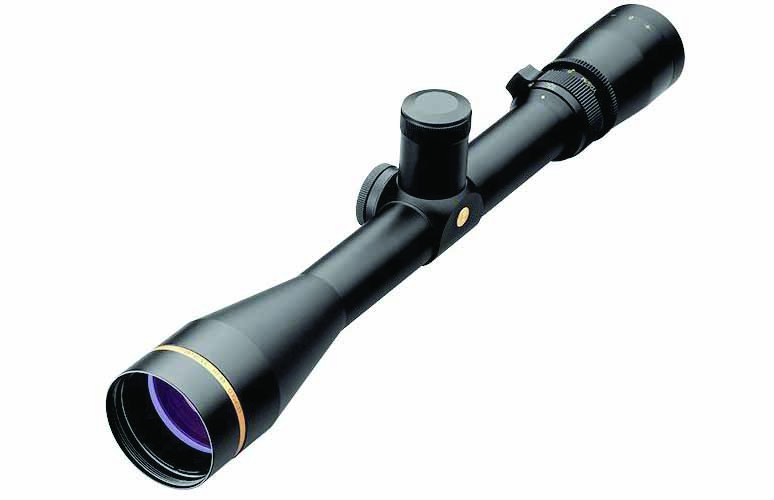
I’ve used many scopes over the course of my hunting and shooting career, and there are many I’ve grown quite fond of. This includes the Leupold VX-5HD and VX-6HD models, and models from other manufacturers, but as far as getting the best value for your optic dollar, I feel comfortable saying that this family of riflescopes has always sat at the head of the class.
Looking at the latest models, I don’t see that changing anytime soon.
Editor's Note: This article originally appeared in the February 2021 issue of Gun Digest the Magazine.

Next Step: Get your FREE Printable Target Pack
Enhance your shooting precision with our 62 MOA Targets, perfect for rifles and handguns. Crafted in collaboration with Storm Tactical for accuracy and versatility.
Subscribe to the Gun Digest email newsletter and get your downloadable target pack sent straight to your inbox. Stay updated with the latest firearms info in the industry.

![Best Concealed Carry Guns In 2025 [Field Tested] Wilson Combat EDC X9S 1](https://gundigest.com/wp-content/uploads/Wilson-Combat-EDC-X9S-1-324x160.jpg)


![Best 9mm Carbine: Affordable PCCs [Tested] Ruger Carbine Shooting](https://gundigest.com/wp-content/uploads/Ruger-Carbine-Shooting-100x70.jpg)
![Best AR-15: Top Options Available Today [Field Tested] Harrington and Richardson PSA XM177E2 feature](https://gundigest.com/wp-content/uploads/Harrington-and-Richardson-PSA-XM177E2-feature-100x70.jpg)

i had one i paid 300 dollars for it i had it a few days and ruined the cross-hairs in it from 7mm rem mag kick it was 300 dollars wasted time and missed deer! i use Bushnell ,Simmons, tasco all out same plant i had a eye operation my eye was changed not all scopes work now, i have vortex & bsa models too ps
Very well-written and informative article! Thank you. One omission however, was the story behind the unusual VX-3L line that had the 50mm & 56mm objective sizes and utilized a scalloped out design on the lower part of the objective to provide the shooter with a very low mounted scope. The objective lens also had a reverse curve to the bottom of the lens, yet rendered a perfectly round view through the eye glass. Quite innovative for the time, yet discontinued a few years later. Perhaps they were too expensive to manufacture. I have one that was made in 2011 and is a 3.5-10 X 50mm.